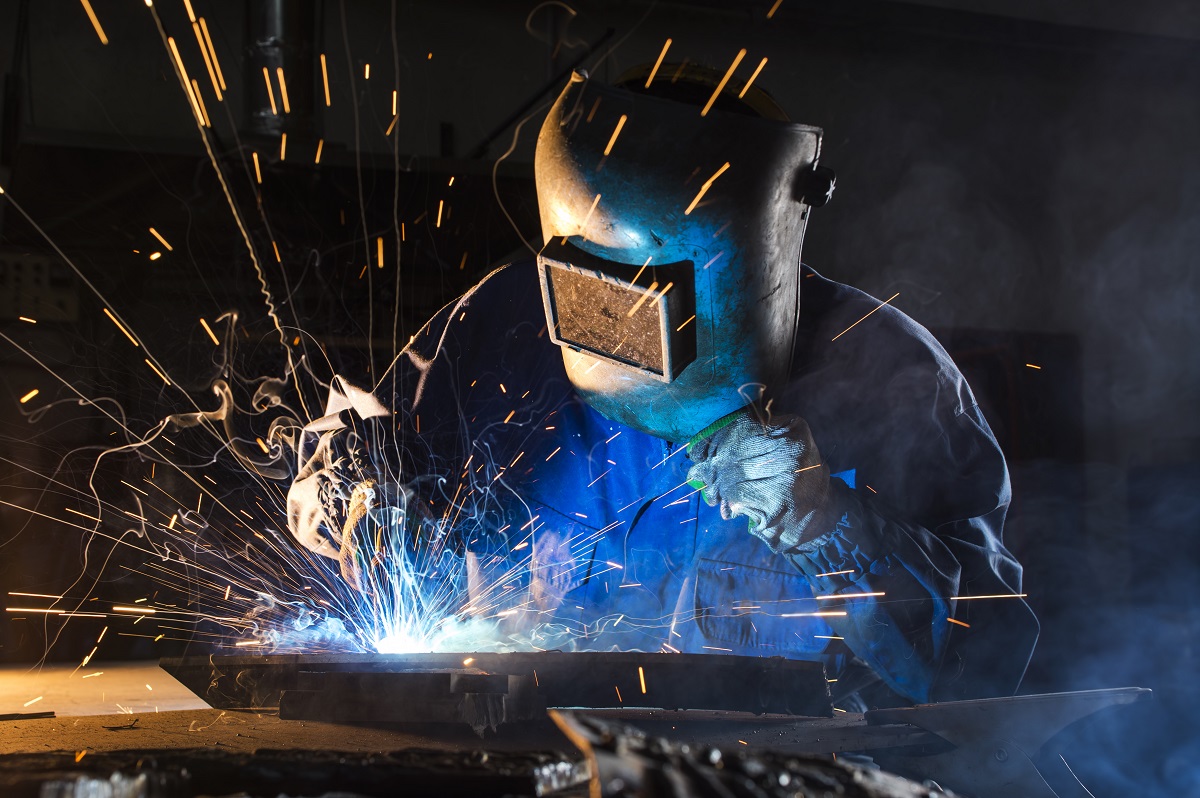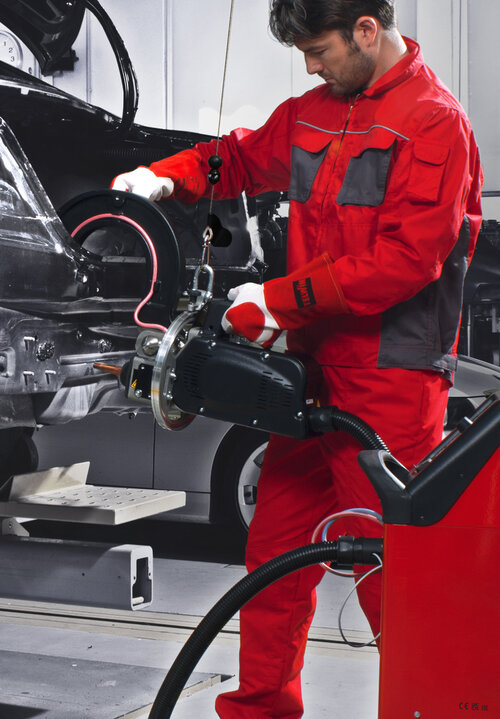Common Welding Repair Issues and How to Address Them Efficiently
Welding repair services commonly experience a series of problems that can endanger the integrity of the end product. Common troubles include poor infiltration, porosity, and misalignment, amongst others. Each problem presents unique obstacles that call for specific methods for resolution. Recognizing these concerns is necessary for welders intending to improve their abilities and results. This conversation will explore these common welding repair service problems and efficient techniques to address them.
Insufficient Infiltration
Poor penetration occurs when the weld metal stops working to totally fuse with the base product, resulting in weak joints and possible structural failings. This issue typically originates from insufficient warm input, incorrect electrode angle, or incorrect welding speed. Welders may encounter insufficient penetration because of a mistake of the required criteria for a certain product density or kind. Furthermore, contamination on the base product's surface can hinder effective bonding, aggravating the issue. To address poor penetration, welders need to guarantee ideal settings on their equipment and preserve a clean work surface area. Routine examination of welds is advised to determine any type of deficiencies early, permitting prompt corrections and the prevention of jeopardized architectural honesty in bonded assemblies.
Porosity
Porosity is a common issue in welded joints that manifests as small gas bubbles caught within the weld steel. This problem can jeopardize the stability of the weld, causing decreased stamina and possible failure under tension. Montana Mobile Welding and Repair Welding. Porosity commonly occurs from contamination, moisture, or inappropriate welding techniques, which allow gases to get away right into the molten weld swimming pool. To resolve porosity, welders ought to ensure appropriate surface prep work, keep a tidy working environment, and make use of suitable welding specifications. In addition, picking the ideal filler material and shielding gas can reduce gas entrapment. Regular evaluation and testing of welds can assist identify porosity early, ensuring timely rehabilitative actions are taken, therefore protecting the quality and integrity of the bonded framework
Imbalance
Imbalance in welding can develop from numerous factors, consisting of inappropriate setup and thermal development. Recognizing the source is vital for effective resolution. A number of modification techniques are available to straighten elements and ensure architectural stability.
Sources of Misalignment
Welding misalignment typically comes from a selection of underlying concerns that can jeopardize structural honesty. One main reason is inappropriate fit-up of elements prior to welding, which can lead to gaps and unequal surface areas. Variations in thermal development during the welding process can likewise cause distortion, especially if the materials being signed up with have different coefficients of expansion. Furthermore, inadequate clamping and fixturing might fall short to hold parts securely in area, leading to movement during welding. Improperly conserved devices, including welding machines and tools, might present inconsistencies in the weld grain, further adding to imbalance. Driver mistake, stemming from not enough training or experience, can additionally play a substantial role in developing misaligned welds.

Adjustment Strategies Available
Addressing misalignment successfully calls for a combination of restorative strategies customized to the certain issues available. One usual technique is the usage of jigs or components to hold elements in the proper position during welding, making certain constant placement. Furthermore, pre-heating the materials can aid minimize distortion and enhance fit-up. For substantial imbalance, mechanical adjustment techniques, such as using hydraulic jacks or clamps, can be used to deal with the placement prior to welding. Post-weld warmth therapy might also be necessary to alleviate stresses triggered by misalignment. Ultimately, careful examination and adjustment throughout the configuration stage can avoid misalignment problems from becoming considerable troubles, promoting a smoother welding procedure and improving overall structural integrity.
Distortion
Distortion is a typical difficulty in welding that can develop from numerous aspects, including uneven heating & cooling. Understanding the sources of distortion is important for implementing effective prevention methods. Resolving this issue not only enhances architectural stability yet additionally enhances the total top quality of the weld.
Root causes of Distortion
When based on the extreme warmth of welding, materials commonly undergo adjustments that can cause distortion. This phenomenon largely emerges from thermal growth and contraction throughout the welding procedure. As the weld location warms up, the product broadens; upon cooling, it gets, which can develop internal tensions. Furthermore, irregular heating throughout a workpiece can worsen these anxieties, leading to bending or flexing. The kind of material likewise plays a substantial role; metals with varying thermal conductivity and coefficients of development might respond in a different way, leading to uncertain distortions. Inadequate joint layout and insufficient fixturing can contribute to imbalance throughout welding, boosting the possibility of distortion. Understanding these causes is important for efficient welding repair work and prevention methods.
Avoidance Techniques
Reliable prevention techniques for distortion during welding focus on regulating warmth input and making certain correct joint design. Maintaining a constant heat input assists to lessen thermal development and contraction, which can bring about distortion. Using techniques such as pre-heating the workpiece can likewise lower the temperature slope, promoting uniform heating. Furthermore, choosing appropriate joint styles, such as T-joints or lap joints, can improve security and lower anxiety concentrations. Implementing appropriate fixturing to secure the workpieces in position further help in maintaining positioning during the welding process. Finally, staggered welding series can disperse warmth click here more equally, preventing local distortion. By using these methods, welders can considerably lower the chance of distortion and improve the general quality of their welds.
Splitting
Cracking is a typical concern experienced in welding repairs, frequently arising from numerous elements such as inappropriate cooling rates, product selection, or insufficient joint prep work. The occurrence of cracks can substantially compromise the integrity of the weld, bring about prospective failures during operation. To address this issue, welders must initially examine the source, making sure that materials are suitable and properly selected for the specific application. Additionally, managing the cooling rate throughout the welding procedure is vital; rapid air conditioning can induce stress and cause splitting. Appropriate joint style and preparation likewise add to decreasing the risk. Executing these techniques can improve weld top quality and toughness, eventually lowering the chance of fracturing in completed weldments.

Insufficient Blend
A significant problem in welding repair work is incomplete blend, which occurs when the weld steel does not appropriately bond with the base material or previous weld passes - Montana Mobile Welding and Repair Belgrade Fabrication. This issue can bring about weak points in the joint, potentially jeopardizing the honesty of the bonded framework. Aspects adding to insufficient fusion include inadequate warm input, inappropriate welding strategy, and contamination of the surfaces being signed up with. To address this concern successfully, welders need to guarantee appropriate pre-weld cleaning and surface area preparation, as well as adjust their welding criteria to achieve adequate penetration and combination. Regular assessment during the welding process can also assist recognize incomplete fusion early, permitting for prompt corrective procedures to boost the general top quality of the weld
Overheating
While welding fixings can boost architectural honesty, overheating presents a significant obstacle that can result in material deterioration. Extreme warmth during welding can modify the mechanical residential or commercial properties of steels, leading to minimized toughness, enhanced brittleness, and warping. This phenomenon is specifically essential in high-stress applications where architectural dependability is critical. Recognizing getting too hot can involve visual evaluations for discoloration or distortion, as well as keeping track of temperature level throughout the welding process. To alleviate the dangers related to getting too hot, welders should employ proper techniques, such as managing warm input, readjusting traveling speed, and making use of appropriate filler materials. In addition, implementing pre- and post-weld warmth therapies can assist restore material residential properties and enhance the general quality of the repair work, making sure lasting performance and safety and security.
Frequently Asked Questions
What Are the Typical Signs of a Welding Problem?

How Can I Examine My Welds for Quality?
To test welds for high quality, one can make use of visual evaluations, ultrasonic screening, and radiographic techniques. Each strategy ensures architectural stability, recognizes problems, and confirms adherence to defined standards, eventually boosting the integrity of the bonded joints.
What Safety and security Safety Measures Should I Take While Welding?
When welding, one should focus on safety by using suitable individual safety equipment, ensuring appropriate air flow, protecting flammable products away, maintaining a tidy workspace, and understanding environments to stop mishaps and injuries.
Can I Repair a Weld Without Redesigning the Entire Joint?
Repairing a weld without remodeling the entire joint is feasible, depending on the damage (Montana Mobile Welding and Repair Belgrade). Strategies such as grinding, adding filler material, or using a welding process can properly deal with details flaws while protecting the surrounding framework
What Equipment Are Important for Efficient Welding Services?
Essential devices for reliable welding repair services consist of a welding equipment, wire brush, mill, protective equipment, clamps, and filler products. Each tool plays an essential role in ensuring quality and security throughout the repair process. Porosity normally develops from contamination, dampness, or inappropriate welding techniques, which enable gases to get away into the liquified weld swimming pool. Badly conserved devices, including welding devices and devices, may present variances in the weld bead, more adding to imbalance. When subjected to the intense warmth of welding, materials often undergo adjustments that can lead to distortion. Fracturing is a typical issue encountered in welding repair work, frequently resulting from numerous factors such as incorrect cooling prices, product option, or inadequate joint prep work. A substantial issue in welding repair services is insufficient blend, which occurs when the weld metal does not properly bond with the base product or previous weld passes.